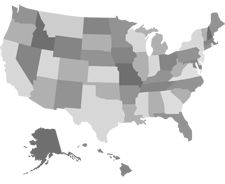Low Interest Payday Loan- Low APR
Knowing the annual percentage rate (APR) that lenders charge can help consumers when comparing rates. The Truth in Lending Act, which congress passed, specifies that lenders must make the APR known in the agreement. Some lenders will list this information on their website. Others will provide the APR after you have submitted your loan application. Please note all mentions of interest and fees in this payday loan article are theoretical.There are ways to calculate the APR by availing yourself of the fee amount. Knowing this is very helpful. You can have something to go by even when a lender does not list the APR on the website.
The APR Formula
Take the loan fee and multiply it by the number of pay periods in a year. For instance, if you pay a charge fee every two weeks, the number of pay periods is 26. To illustrate this, we will use a loan fee of $15 per $100 borrowed. This rate is common, even though first time borrowers can find lower rates.
This is what the formula would look like: 15 (loan fee) x 26 (pay periods) = 390
Therefore, the yearly loan charge is 390. Calculating the percentage rate requires one additional step. Take the yearly charge and divide it by the loan amount. Next, multiply the total by 100 to arrive at the percent.
For example, you can take 390 and multiply it by $100 (original loan amount). You would have the following formula:
- 390 (yearly charge) x 100 (loan amount) = 3.9
-3.9 x100 (to get the percentage rate) = 390% APR
What it Means
This may sound like a lot of money. However, keep in mind that lenders have designed these loans as short-term loans. The lender plans to receive his money on your next payday. He does not plan to wait a whole year before receiving payment. You will not actually pay $390 in finance charges for the year. You will only pay the $15 for the pay period, providing that you pay the full amount on the specified date. If you were to roll over the loan, this could lead to unmanageable finance charges.
Cash advances are temporary solutions to unexpected emergencies. Some of these emergencies could be bounced check fees, car repairs, or even a hospital or doctor's bill. Long-term credit situations require a different approach, possibly a credit card or a personal loan. Although such loans may affect your credit score, the rates are more affordable.
State Guides
- Alabama
- Alaska
- Arizona
- Arkansas
- California
- Colorado
- Connecticut
- Delaware
- District of Columbia
- Florida
- Georgia
- Hawaii
- Idaho
- Illinois
- Indiana
- Iowa
- Kansas
- Kentucky
- Louisiana
- Maine
- Maryland
- Massachusetts
- Michigan
- Minnesota
- Mississippi
- Missouri
- Montana
- Nebraska
- Nevada
- New Hampshire
- New Jersey
- New Mexico
- New York
- North Carolina
- North Dakota
- Ohio
- Oklahoma
- Oregon
- Pennsylvania
- Rhode Island
- South Carolina
- South Dakota
- Tennessee
- Texas
- Utah
- Vermont
- Virginia
- Washington
- West Virginia
- Wisconsin
- Wyoming



